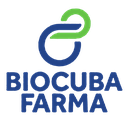Executive Secretary

9th International Scientific Conference on Agricultural Development and Sustainability
10th Symposium of Veterinary Medicine and Zootechnics
Abstract
With the objective of analyzing the knowledge, attitude and practices of producers to exploit the potential of Tithonia diversifolia (Hemsl.) Gray in dairy systems of Pastaza, Ecuador, in a first stage, a questionnaire was applied with 23 questions about the farm, the producer and cultivation on 300 properties. Data were evaluated using a multinomial logistic model. It was notable that most of the questions were qualitative in nature and their coefficients were negative. The quantity and frequency with which forage is supplied indicates an increase in volumes and are direct practices that were thus reflected in the model. Knowledge about the ways in which T. diversifolia is used for animal feed and whether providing it in the diet can help improve production parameters did not have significant differences between those who responded in favor or against, even with scientific evidence about its potential. forage and nutritional value, which was corroborated, in a second stage, in an agronomic experiment that evaluated yield and chemical composition under five cutting frequencies (30, 45, 60, 75 and 90 days). Tithonia diversifolia is a species that manifests potential yield and nutritional quality, determined by the frequency with which the cut is carried out in the soil and climate conditions of Pastaza. It is necessary to improve the role of knowledge dissemination, with emphasis on performance and nutritional quality, to modify the attitude of producers towards the potential of T. diversifolia in Pastaza dairy systems.
Resumen
Con el objetivo de analizar el conocimiento, actitud y prácticas de productores para explotar las potencialidades de Tithonia diversifolia (Hemsl.) Gray en sistemas lecheros de Pastaza, Ecuador, en una primera etapa, se aplicó un cuestionario con 23 preguntas sobre la finca, el productor y el cultivo en 300 predios. Los datos se evaluaron mediante un modelo logístico multinomial. Fue notorio que la mayoría de las preguntas tuvieran carácter cualitativo y sus coeficientes signo negativo. La cantidad y frecuencia con que suministran el forraje indican incremento de los volúmenes y son prácticas directas que se reflejaron así en el modelo. El conocimiento sobre formas en que utilizan T. diversifolia para la alimentación animal y si suministrarla en la dieta puede ayudar a mejorar parámetros de producción, no tuvo diferencias significativas entre los que respondieron a favor o en contra, aun con las evidencias científicas sobre su potencial forrajero y valor nutritivo, lo cual fue corroborado, en una segunda etapa, en un experimento agronómico que evaluó rendimiento y composición química bajo cinco frecuencias de corte (30, 45, 60, 75 y 90 días). La Tithonia diversifolia es una especie que manifiesta potencialidades de rendimiento y calidad nutritiva, determinadas por la frecuencia con que se realiza el corte en las condiciones de suelo y clima de Pastaza. Se requiere mejorar el papel de difusión de conocimientos, con énfasis en rendimiento y calidad nutricional, para modificar la actitud de los productores hacia las potencialidades de T. diversifolia en sistemas lecheros de Pastaza.
About The Speaker

Dra. VERÓNICA CRISTINA ANDRADE YUCAILLA

Discussion

